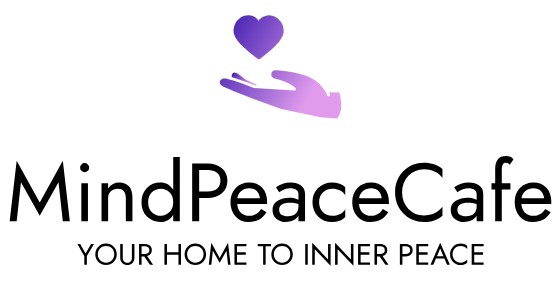Mindful Momentum: Cultivating Employee Serenity for Organizational Success

Welcome to the world of corporate mindfulness! In today’s fast-paced work environment, taking care of employee wellbeing is crucial for maintaining a happy, productive workforce. As workplaces evolve, the incorporation of meditation programs has become a game-changer, revolutionizing the way employees manage stress and focus on their mental health. This article delves into the realm of corporate meditation programs, highlighting their impact on creating a work environment teeming with positivity, productivity, and satisfaction. From understanding the importance of employee mental health to designing effective meditation programs and measuring their success, we explore the journey of fostering a culture of wellbeing at work. Get ready to unlock the secrets of a workplace where meditation is not just encouraged – but celebrated and deeply valued.
1. The Importance of Wellbeing at Work
Creating a healthy and nurturing work environment is more than just a trend – it’s a strategic necessity. When we prioritize the wellbeing of our employees, we set the stage for enhanced productivity, improved satisfaction, and overall success. Workplaces that focus on employee mental health and wellbeing create a positive ripple effect, boosting team morale and fostering a culture of support and growth. Research consistently demonstrates that when employees feel supported in their mental and emotional health, they perform better, are more engaged, and exhibit higher levels of satisfaction. This isn’t just about corporate responsibility; it’s about building a thriving, sustainable business. According to recent studies, companies that invest in employee wellbeing outperform their counterparts, showcasing that prioritizing wellbeing is not just a feel-good initiative; it’s a smart business move. Additionally, the connection between employee mental health and workplace productivity cannot be overstated. From reducing absenteeism to increasing retention rates, the impact of prioritizing employee wellbeing is extensive and transformative. By recognizing and advocating for the importance of employee wellbeing, organizations position themselves as leaders in creating environments that drive success and fulfillment.
Mental Health and Workplace Productivity
In today’s bustling workplaces, mental health and productivity go hand in hand. When we talk about creating a thriving work environment, it’s vital to understand the profound impact of mental health on overall productivity. Studies have consistently shown that mental health and productivity are deeply interconnected. When employees grapple with stress, anxiety, or other mental health challenges, it substantially affects their ability to perform optimally at work. Addressing mental health in the workplace not only benefits employees on a personal level, but it also serves as a catalyst for improved productivity and organizational success. The World Health Organization underscores this importance, noting that a mentally healthy workforce contributes to enhanced productivity and a more vibrant work culture. Furthermore, research supports the notion that promoting mental health not only reduces absenteeism and presenteeism but also enhances employee engagement and job satisfaction within the organizational framework.
Benefits of Employee Wellbeing
Embracing employee wellbeing isn’t just an act of kindness; it’s an investment in the success of your organization. Prioritizing the wellbeing of your employees brings forth a myriad of positive outcomes, shaping a workplace that thrives on support, growth, and productivity. When employees feel valued, supported, and cared for, they are more likely to perform at their best, leading to enhanced overall performance. This symbiotic relationship between employee wellbeing and organizational success has gained traction in numerous studies, all highlighting the immense benefits derived from fostering a positive work environment. Reduced absenteeism is another notable perk stemming from a workplace culture that places a premium on employee wellbeing. By promoting physical and mental health, organizations witness a decline in absenteeism, further reinforcing the connection between employee wellbeing and workplace productivity. Moreover, the impact of prioritizing employee wellbeing extends to improved employee retention. Employees are not just seeking jobs; they are seeking environments where they feel seen, heard, and supported. Companies that invest in employee wellbeing are more likely to retain top talent, fostering a loyal and motivated workforce.
2. Introduction to Corporate Meditation Programs

Welcome to the realm of corporate meditation programs, where fostering employee wellness takes center stage. The surge in popularity of meditation programs within corporate settings signals a paradigm shift in how organizations prioritize the holistic wellbeing of their employees. With the recognition that stress management and mental clarity are integral to employee performance, an increasing number of companies are embracing meditation programs as a means to support their workforce. This newfound approach not only acknowledges the importance of mental health but also underscores its direct correlation to employee wellness and organizational success. The positive impacts of meditation on employee wellness have been widely documented, showcasing a notable improvement in stress reduction, enhanced focus, and overall mental clarity. Businesses are recognizing that a mentally healthy workforce translates to higher productivity, improved morale, and a harmonious work environment. As a result, meditation programs are swiftly becoming a hallmark of progressive workplaces that prioritize the holistic health of their employees. By embracing and actively promoting corporate meditation programs, organizations are setting a transformative course, fuelling a workplace culture where employee wellness is a fundamental pillar, driving both personal and professional growth. Get ready to explore the profound impact of these programs and how they contribute to a more vibrant, productive work environment.
The Rise of Meditation in the Workplace
In recent years, we’ve witnessed a remarkable shift in the corporate landscape as meditation and mindfulness practices have swiftly become integral to workplace cultures. The growing trend of meditation in the workplace not only reflects a change in how we perceive employee wellbeing but also mirrors a fundamental shift in how organizations prioritize the holistic health of their workforce. The reasons behind this implementation are multifold, rooted in a deep understanding of the benefits of meditation on employee mental health, focus, and overall job satisfaction. With mounting evidence showcasing the positive impact of mindfulness practices, more and more companies are embracing meditation as a tool to empower their employees and foster a harmonious work environment. Additionally, the incorporation of meditation and mindfulness in corporate cultures stems from the recognition of the need to mitigate stress and promote mental clarity, factors that significantly influence employee performance and overall workplace dynamics. Moreover, the rise of meditation in the workplace reflects a fundamental shift in how we approach leadership and organizational culture, emphasizing the importance of empathy, emotional intelligence, and resilience as cornerstones of effective leadership and employee support.
Scientific Evidence and Research
Delving into the scientific realm, evidence abounds regarding the profound impact of meditation programs on employee wellbeing. Scientific studies consistently affirm the effectiveness of meditation in reducing stress levels, enhancing focus, and promoting mental clarity among employees. Research indicates that engaging in mindfulness practices can lead to a notable reduction in stress hormones, ultimately contributing to a more balanced and resilient mental state. Furthermore, scientific evidence supports the idea that regular meditation not only fosters enhanced focus but also augments cognitive flexibility and emotional regulation, all of which are invaluable in a dynamic corporate setting. These findings go beyond anecdotal observations, presenting a compelling case for businesses to integrate meditation programs into their workplace wellness initiatives. Moreover, the scientific community continues to uncover neurological and physiological evidence demonstrating the positive impact of meditation, offering a deeper understanding of how these practices influence employee mental health and cognitive abilities. As the research landscape evolves, it becomes increasingly clear that meditation is not merely an esoteric concept but an evidence-based approach to nurturing employee wellbeing and fostering a more balanced, productive workforce.
3. Designing an Effective Corporate Meditation Program
Designing an effective corporate meditation program goes beyond simply incorporating meditation sessions into the workday; it involves a deep understanding of employee needs and a thoughtful, holistic approach to fostering a healthy work environment. To kickstart this process, it’s crucial to comprehensively identify and understand the unique requirements and preferences of employees. This may involve conducting surveys or holding open discussions to gauge interest and gather insights, ensuring that the meditation program is tailored to resonate with the workforce. Additionally, integration into the workday is key; it’s essential to seamlessly weave meditation sessions into the corporate routine without disrupting normal operations. This might involve setting up dedicated meditation spaces, scheduling sessions during less busy periods, or providing flexible options to accommodate varying employee schedules. Creating an environment that promotes mental and emotional wellbeing reaps numerous benefits, including enhanced focus, reduced stress, and improved overall job satisfaction. The successful implementation of a meditation program is not just about checking a box; it’s about building a culture that values and prioritizes the holistic health of its employees, ultimately fostering a thriving, supportive work environment.
Understanding Employee Needs and Preferences
Understanding and addressing the individual needs and preferences of employees is at the heart of crafting a successful and impactful meditation program within a corporate setting. Each employee brings their own set of experiences, challenges, and comfort levels, making it essential to engage with the workforce directly to identify what resonates with them. One approach is to conduct surveys or focus groups to gauge interest in meditation and unearth the specific types of practices that employees find beneficial. This direct engagement not only ensures that the program is tailored to meet the diverse needs of the workforce but also fosters a sense of inclusivity and involvement. Furthermore, recognizing the varying levels of familiarity with meditation is pivotal in customizing the program for maximum participation and benefits. Some employees might be new to meditation, while others may already have an established practice. Catering to this spectrum of experience calls for a nuanced approach, offering introductory sessions for beginners alongside more advanced practices for those already familiar with meditation. By acknowledging and embracing the diversity of employee needs and preferences, the meditation program becomes a reflection of the workforce itself, promoting a culture of support and inclusiveness.
Integration into the Workday
Successfully integrating meditation sessions into the workday requires a thoughtful approach that respects the demands and rhythms of the workplace. One effective strategy involves offering flexible timing for meditation sessions, allowing employees to participate at a time that best aligns with their schedules. This adaptability not only accommodates varying work schedules but also empowers employees to engage with the meditation program in a way that suits their individual needs. Additionally, creating designated spaces within the workplace that are conducive to meditation fosters an environment that supports mental and emotional wellbeing. Whether it’s a quiet room for individual practice or a communal space for group sessions, providing dedicated areas for meditation helps employees engage more deeply with the practice, all without interrupting the flow of daily operations. Furthermore, seamlessly integrating meditation into the workday involves promoting awareness and normalizing its practice. This can be achieved through internal communications, workshops, or informational sessions that educate employees about the benefits of meditation and the resources available to them. By weaving meditation into the fabric of the workday without disruption, organizations can effectively nurture a culture in which employee wellbeing is an integral part of day-to-day operations, leading to a more balanced and harmonious work environment.
4. Measuring the Success of a Corporate Meditation Program
Measuring the success of a corporate meditation program is not just about numbers and metrics; it’s about understanding the profound impact that mindfulness initiatives can have on employee wellbeing and the overall fabric of the organization. One vital aspect of this measurement involves collecting feedback directly from employees, gauging their experiences and perceptions of the meditation program. This can take the form of surveys, interviews, or focus groups, offering valuable insights into how the program has influenced their daily work experiences and overall mental state. Additionally, evaluating the impact of the meditation program entails utilizing key performance indicators and wellness metrics to quantify its influence on productivity, stress levels, and overall wellbeing. By examining absenteeism rates, employee retention, and performance trends, organizations can gain a holistic understanding of how the meditation program has contributed to the workplace environment. Furthermore, incorporating anecdotal evidence through employee testimonials and personal success stories provides a qualitative perspective that complements quantitative data, painting a comprehensive picture of the program’s impact. By embracing a multifaceted approach to evaluating the success of the meditation program, organizations are better equipped to refine their initiatives and foster a workplace culture that thrives on employee wellbeing and organizational performance.
Employee Feedback and Engagement
Engaging employees in the process of evaluating the meditation program is key to understanding its impact and making necessary adjustments. One method for collecting feedback involves regular surveys that delve into employees’ experiences with the program, their perceived benefits, and any areas that could be improved. This two-way dialogue not only provides insightful data but also empowers employees, allowing them to feel heard, valued, and actively involved in shaping the corporate wellness initiatives. Additionally, creating open channels for feedback, such as suggestion boxes, virtual forums, or dedicated communication channels, ensures that employees can express their thoughts and experiences in a manner that is comfortable and accessible to them. By encouraging open and honest feedback, organizations can gain a deeper understanding of how the meditation program influences employee well-being and the work environment. Furthermore, involving employees in the feedback process fosters a sense of ownership and investment in the program’s success, nurturing a culture of collective responsibility for employee well-being. Ultimately, by embracing employee feedback and engagement, organizations pave the way for a workplace environment that is not only receptive to employee needs but actively works to enhance their overall work experience through thoughtful wellness programming.
Performance Metrics and Wellness Indicators
Measuring the impact of a corporate meditation program involves a holistic approach that encompasses both performance metrics and wellness indicators. Key performance indicators (KPIs) such as productivity rates, project timelines, and task completion serve as valuable quantitative measures reflecting the influence of the meditation program on workplace efficiency. By analyzing KPI trends before and after the implementation of the program, organizations can gauge its impact on overall productivity and operational excellence. Additionally, wellness metrics, including stress levels, absenteeism rates, and employee turnover, offer invaluable insights into the program’s influence on employee well-being. A reduction in stress levels or absenteeism, for example, signifies the program’s efficacy in fostering a healthier, more harmonious work environment. Moreover, incorporating qualitative indicators such as employee feedback, satisfaction surveys, and anecdotal accounts enriches the evaluation process, providing a multifaceted understanding of the program’s impact. By intertwining performance metrics and wellness indicators, organizations gain a comprehensive overview of how the meditation program influences both employee well-being and organizational success, laying the groundwork for informed decision-making and program enhancements.
How can I convince my company to implement a corporate meditation program?
When advocating for a corporate meditation program, it’s essential to highlight the potential benefits. You can emphasize how such a program positively impacts employee mental health, leading to enhanced focus, reduced stress, and improved overall job satisfaction. Presenting case studies or research demonstrating the success of such initiatives in other organizations can also help make a compelling case. Additionally, proposing a pilot program or a trial period to showcase its impact within the company can be a persuasive approach.
What are some practical ways to integrate meditation into a busy workday?
Integrating meditation into a busy workday requires flexibility and creativity. Offering short, guided meditation sessions during lunch breaks or incorporating mindfulness exercises during team meetings can be effective ways to introduce meditation. Providing access to quiet spaces for individual practice or encouraging employees to engage in brief breathing exercises at their desks are also practical approaches that don’t disrupt daily operations.
How can I measure the success of a meditation program in the workplace?
Measuring the success of a meditation program involves a combination of qualitative and quantitative assessment. This includes using employee feedback, surveys, and direct observations to gauge participation, engagement, and perceived benefits. Quantitative measures such as absenteeism rates, productivity metrics, and stress levels provide a more structured evaluation of the program’s impact. It’s important to establish benchmarks before implementing the program to effectively compare and analyze its influence on employee well-being and organizational performance over time.




